Micron has a number of new announcements coming with its Computex 2021 keynote. Specifically, we are going to cover the SSD and memory/ data center announcements. Micron is also making an automotive memory storage announcement, but we are going to assume if we have readers designing systems for automobiles, they will hear from their Micron sales rep shortly. As with other keynotes, we are covering this live.
Micron Computex 2021 Keynote
As a quick overview, here is Micron’s multi-billion dollar portfolio primarily focused on memory and storage. The company is not updating us on high-bandwidth in-package memory or graphics memory, but it is making announcements across the rest of the portfolio.
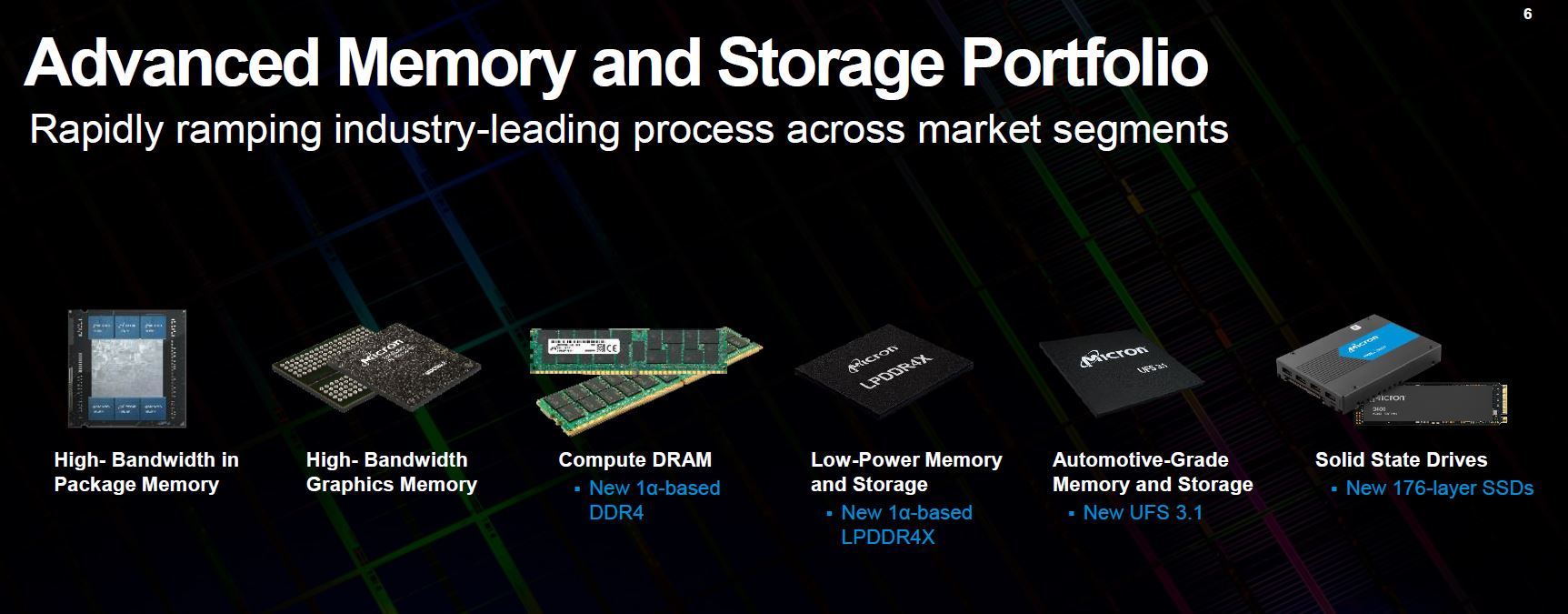
Again, we are not going to cover the UFS 3.1 automotive device here.
Micron SSD Advancements
Something that is very interesting here is that Micron shared a projection that the client market is about to start transitioning to the PCIe Gen4 NVMe SSD in a major way. We see a leveling off in 2023/24 as we would expect PCIe Gen5 SSDs to become more commonplace.
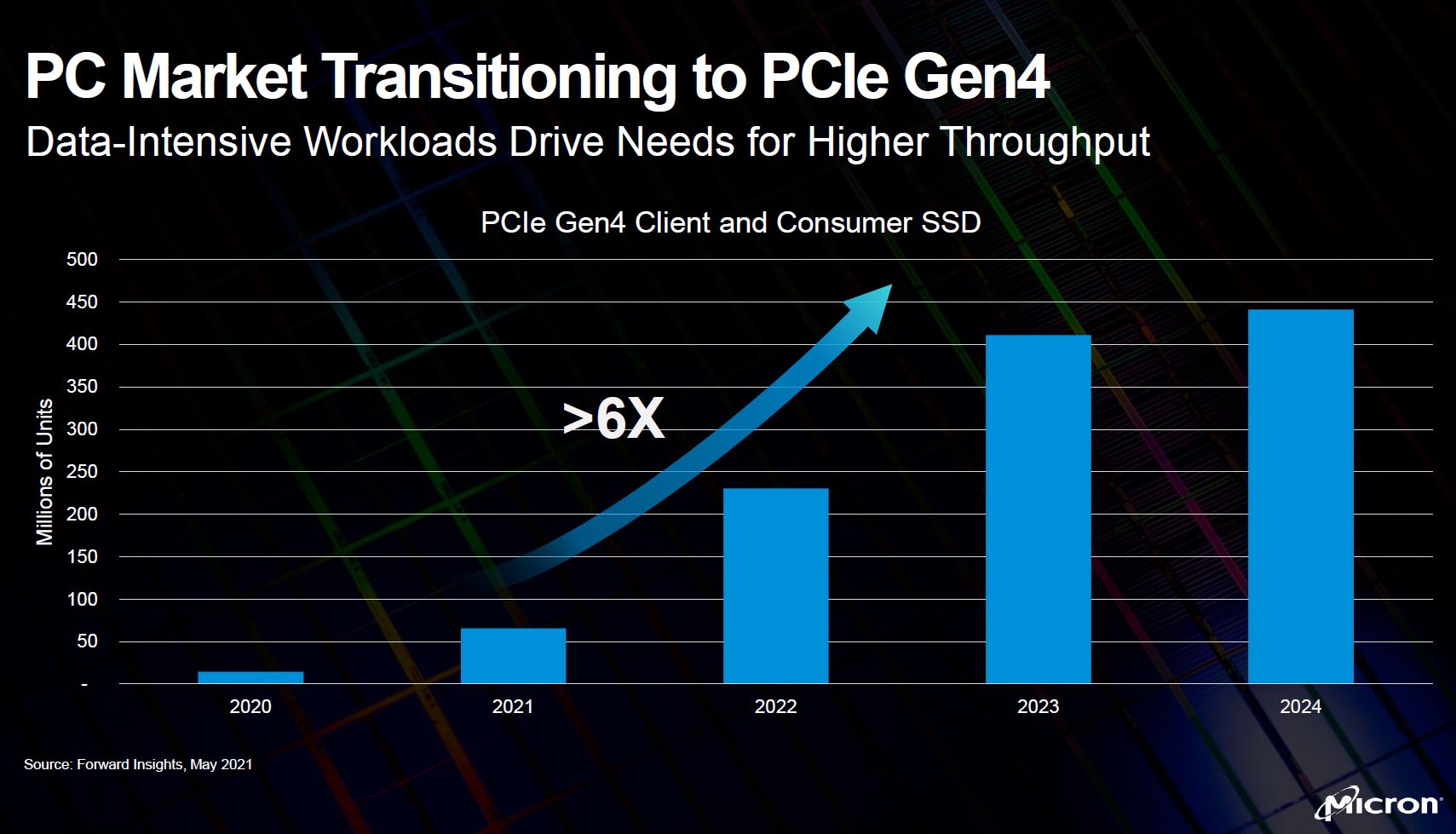
With this ramp, Micron has two new PCIe Gen4 NVMe SSD families for the client market. We know many of our readers also use these as boot devices.
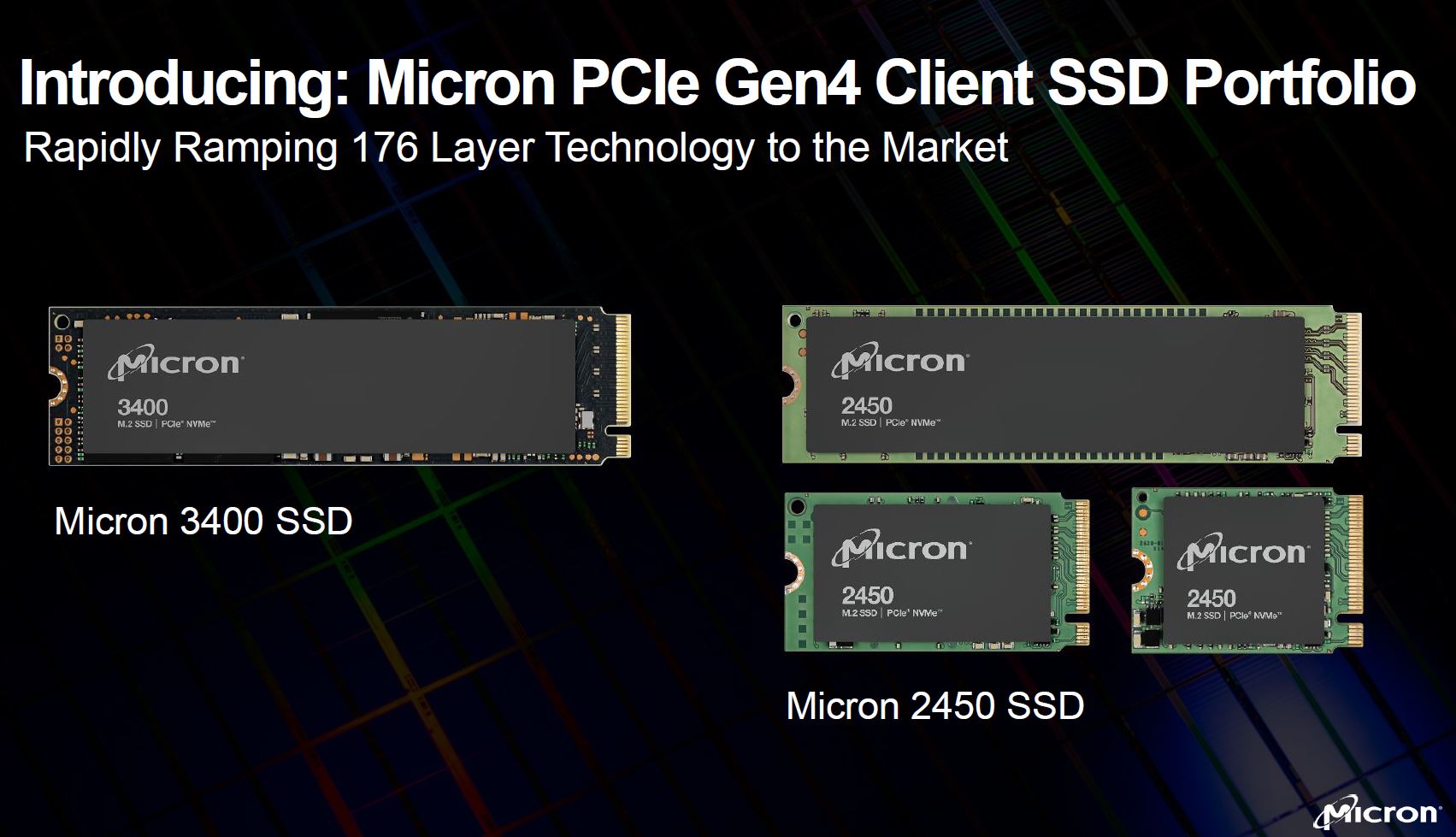
Here the Micron 3400 series family is a NVMe 1.4 device that uses 176-Layer TLC 3D NAND. It is notable this is still a TLC device, but it is also limited to 2TB.
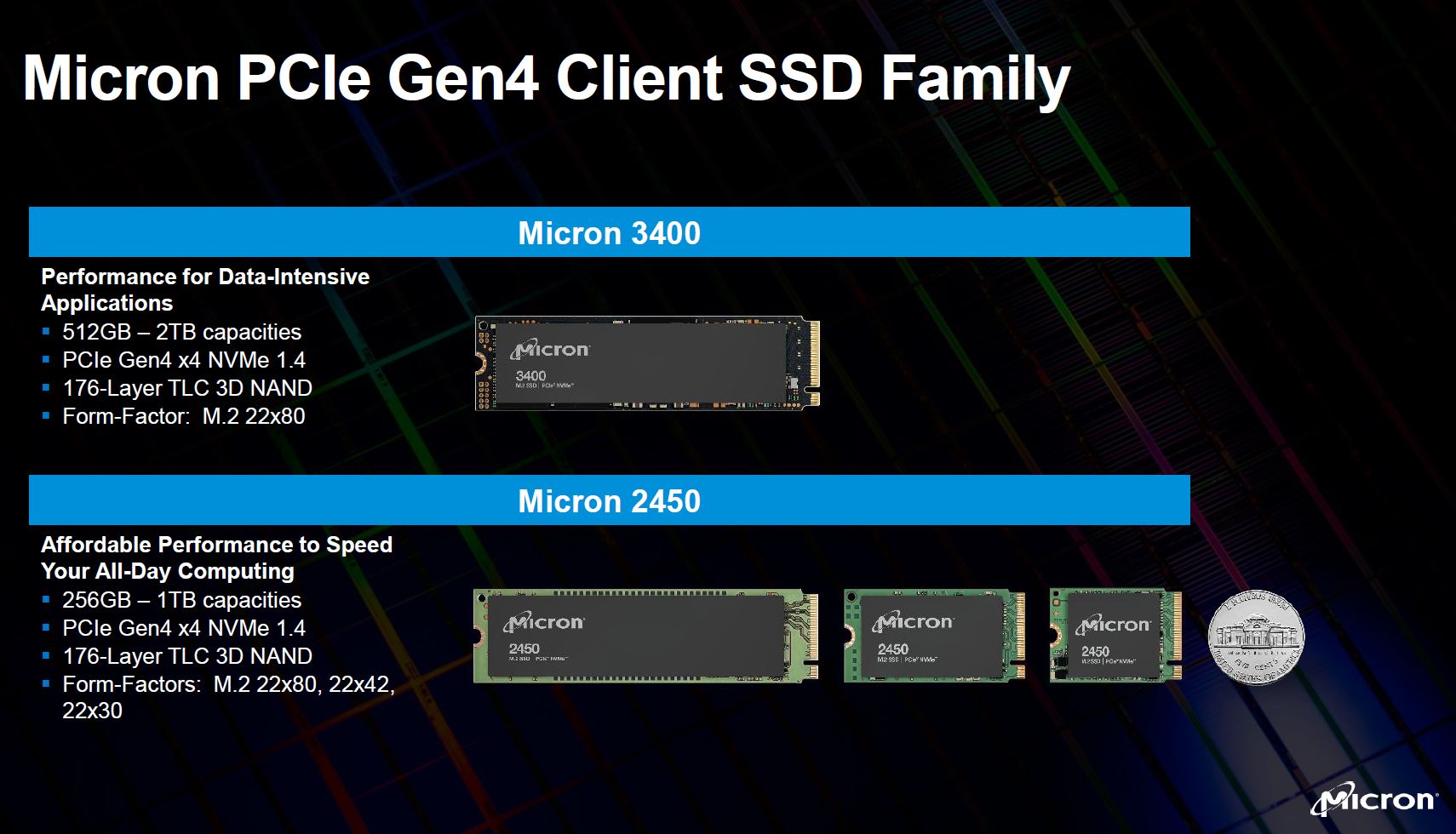
Micron also has a lower-cost drive family specifically with the Micron 2450 family. This is something we might expect as a lower-cost option in a STH Project TinyMiniMicro 1L corporate desktop PC.
Micron Memory Advancements
Micron also has a number of memory advancements including a new 1a memory node. Micron will have both LPDDR4x and also is shipping newer higher density DDR4 based on the new node. This density is what drives server memory modules jumping a capacity level. Higher density packages mean that smaller modules become less economically viable and larger models become more viable. This is a big deal for the server industry.
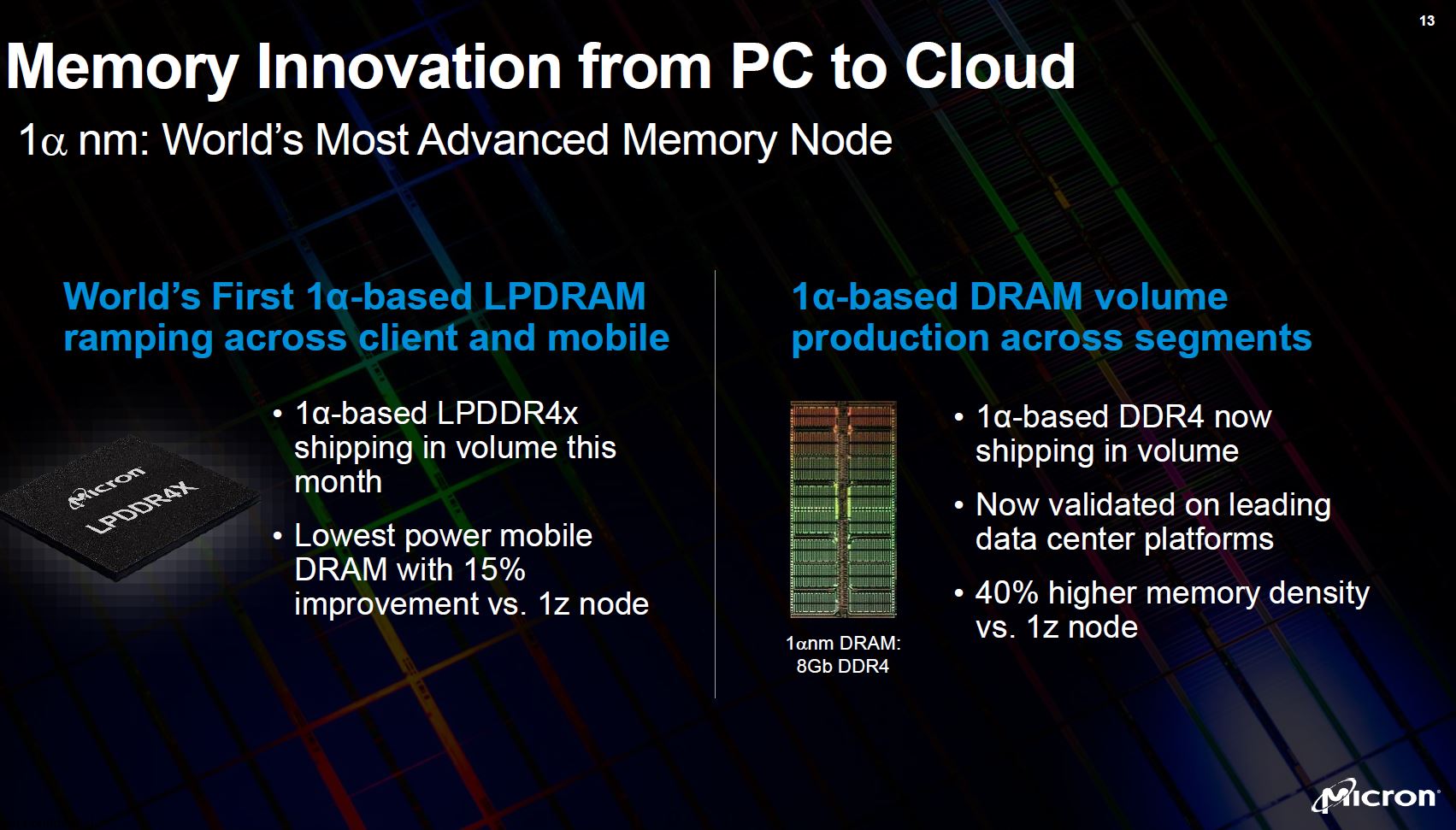
The next generation of memory is DDR5. We are only a few quarters from seeing DDR5 start to hit the market. We get more performance which will be important for larger CPUs. Micron says we will see twice the bandwidth when these new modules hit the market. We know that there are many readers who will be excited by DDR5, we do want to caution that major memory generation changes often have a high-cost premium which is something we are already hearing in the industry will be an initial adoption challenge.
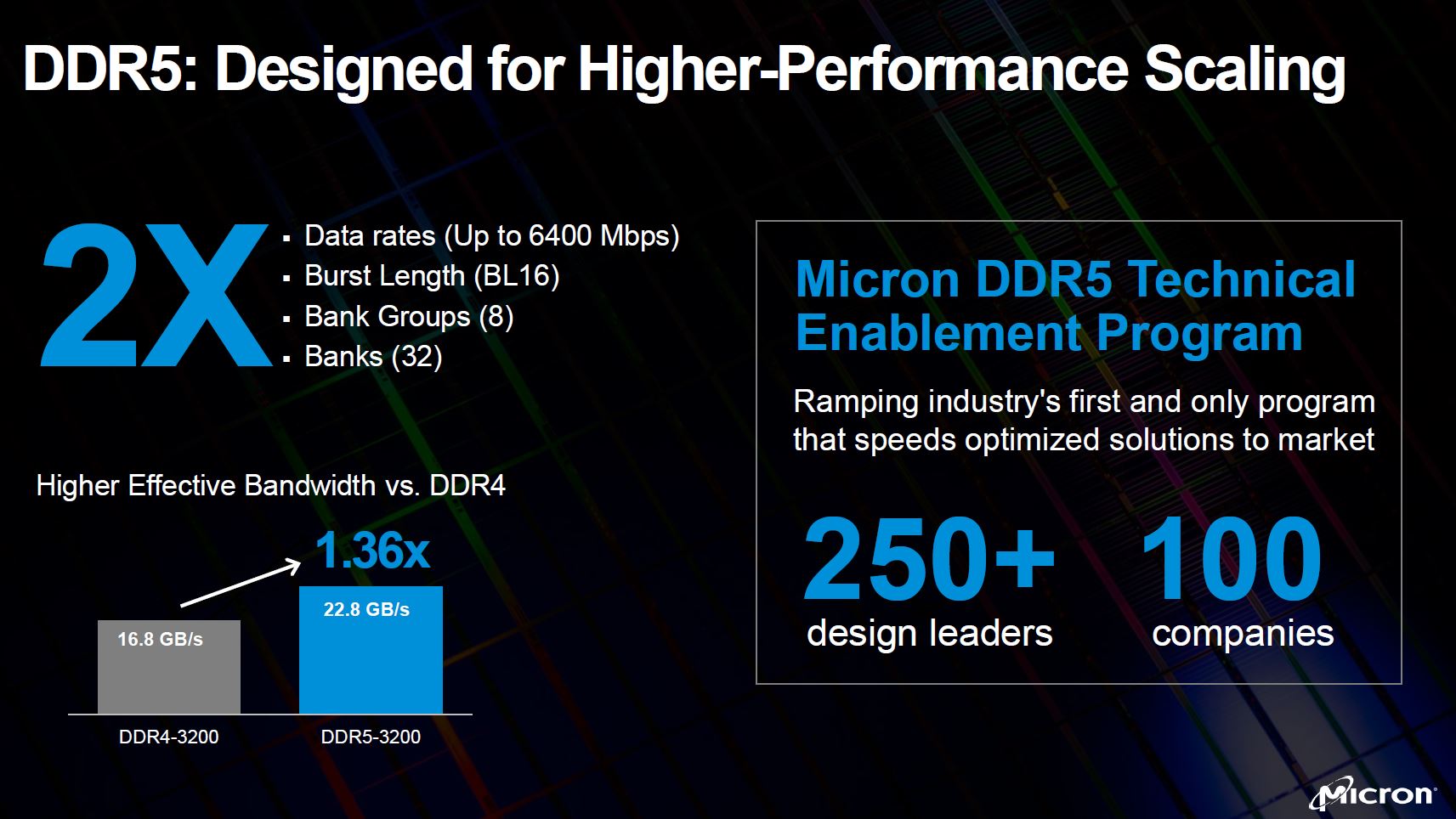
Micron has its version of the memory and storage pyramid. We covered Micron’s exit from the 3D XPoint memory market in Glorious Complexity of Intel Optane DIMMs and Micron Exiting 3D XPoint. There, the company discussed storage class memory and CXL attached memory which is Micron’s vision of “Far Memory.”
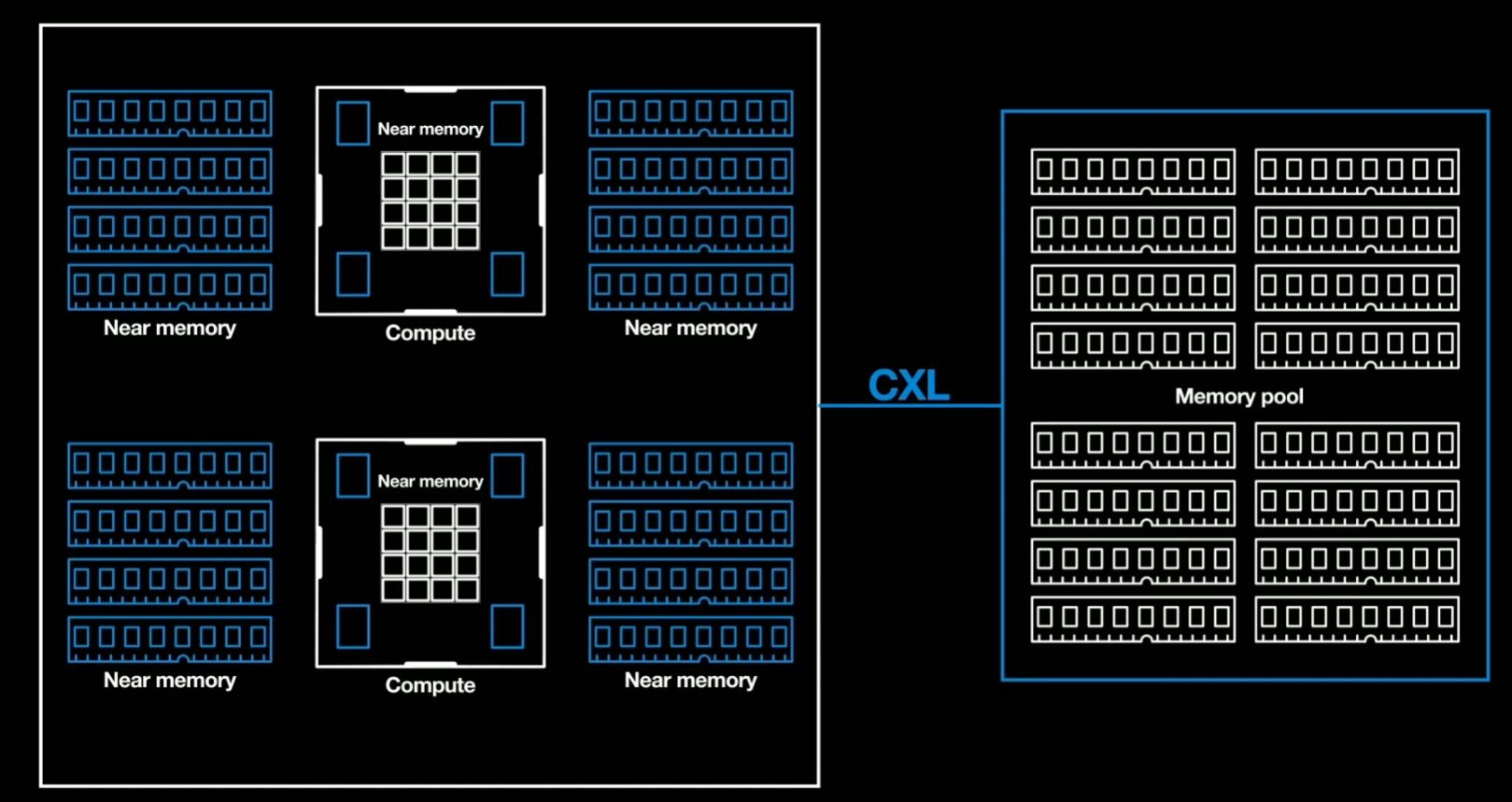
We will note here that Samsung announced its CXL Memory Expander with DDR5 recently and expect Micron to do the same for this far memory tier at some point.
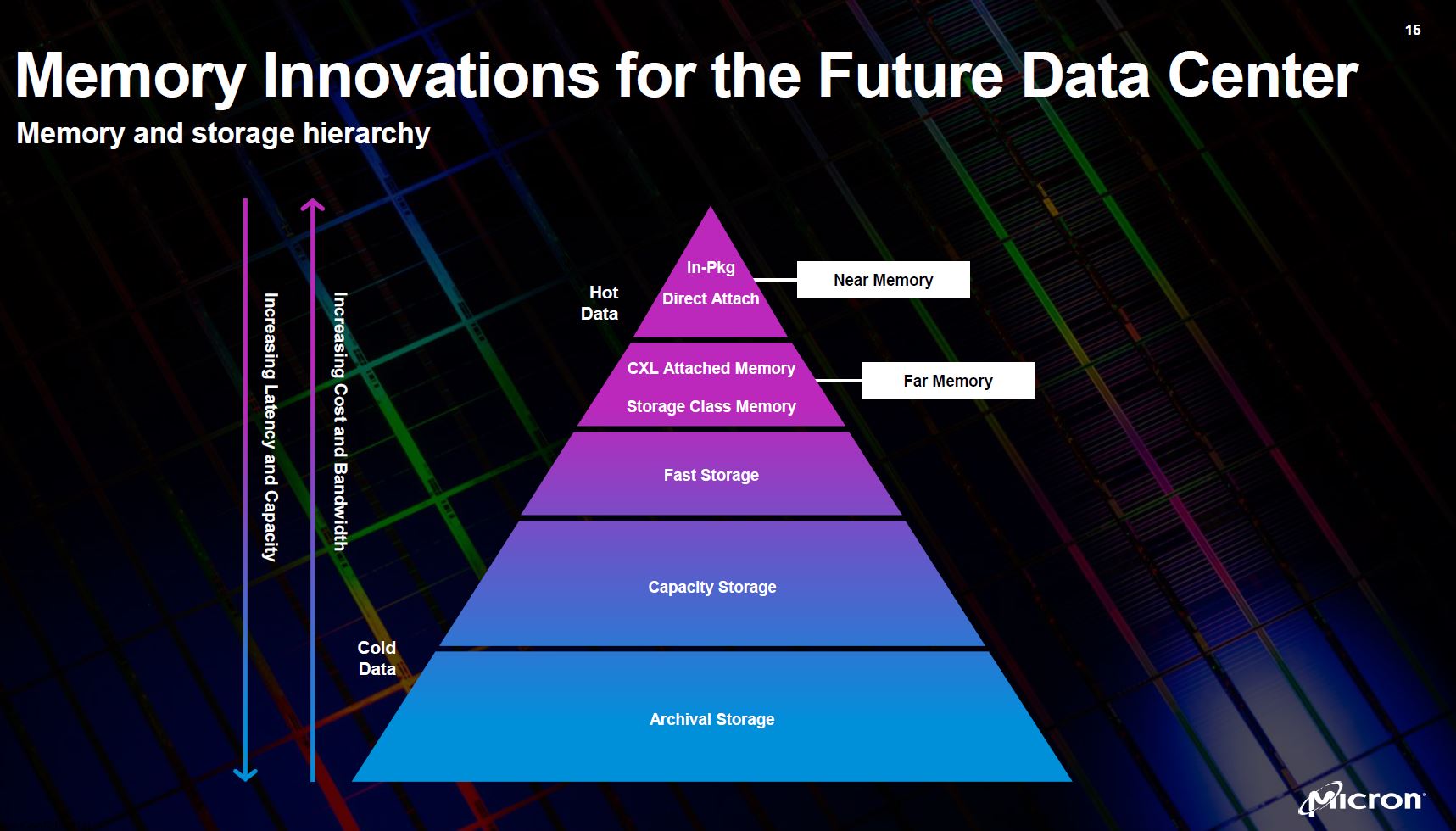
Micron’s vision of the data center is one where there are shelves of memory, compute, and storage. Micron plays specifically in the memory and storage spaces today and hopes to access compute through its near memory products. We see this happening as CXL / Gen-Z starts to proliferate, but likely not until CXL 2.0 hits or later.
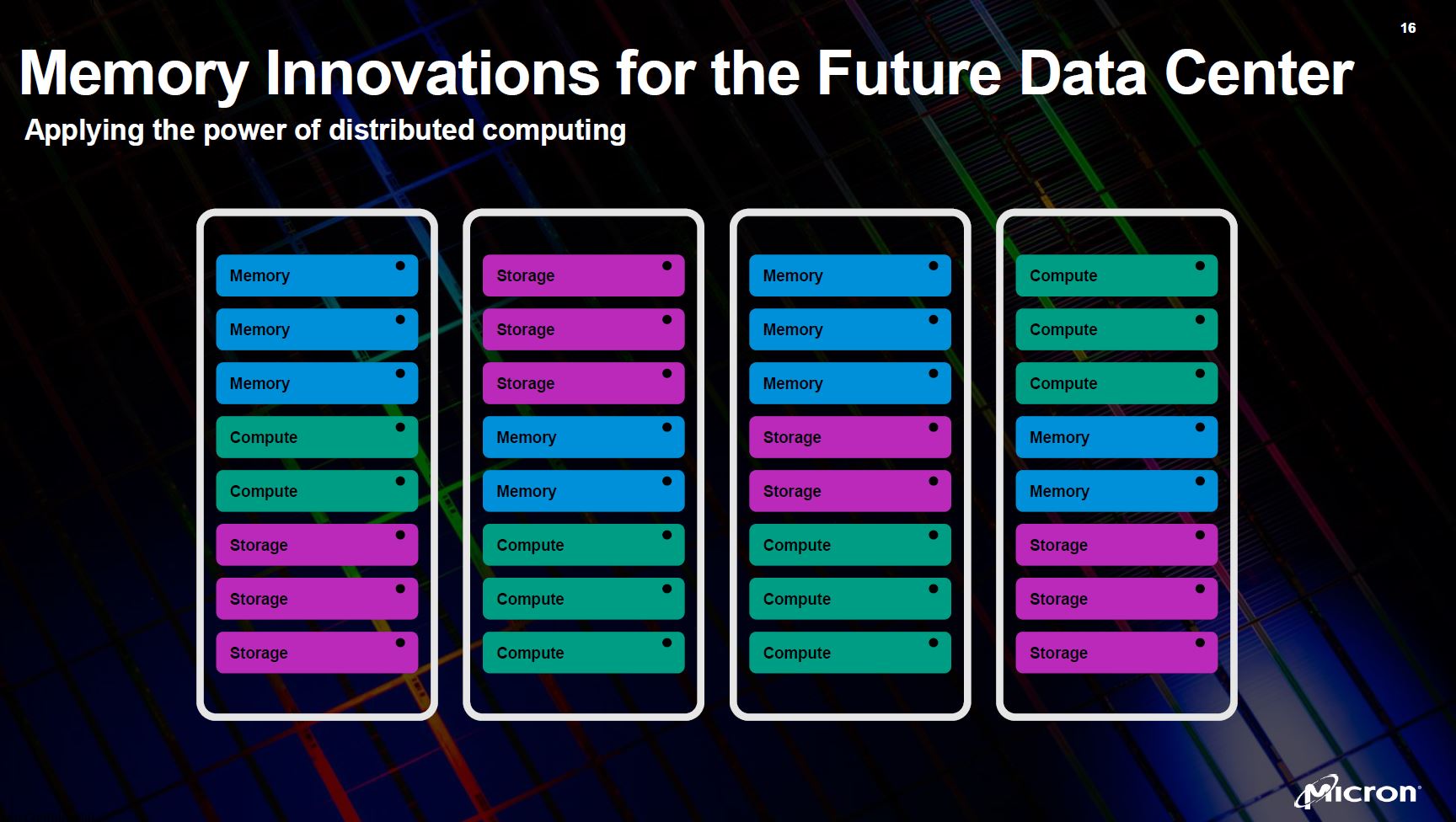
Micron mentions its HBM2E high bandwidth memory. We are going to see more HBM2E devices in the near future.
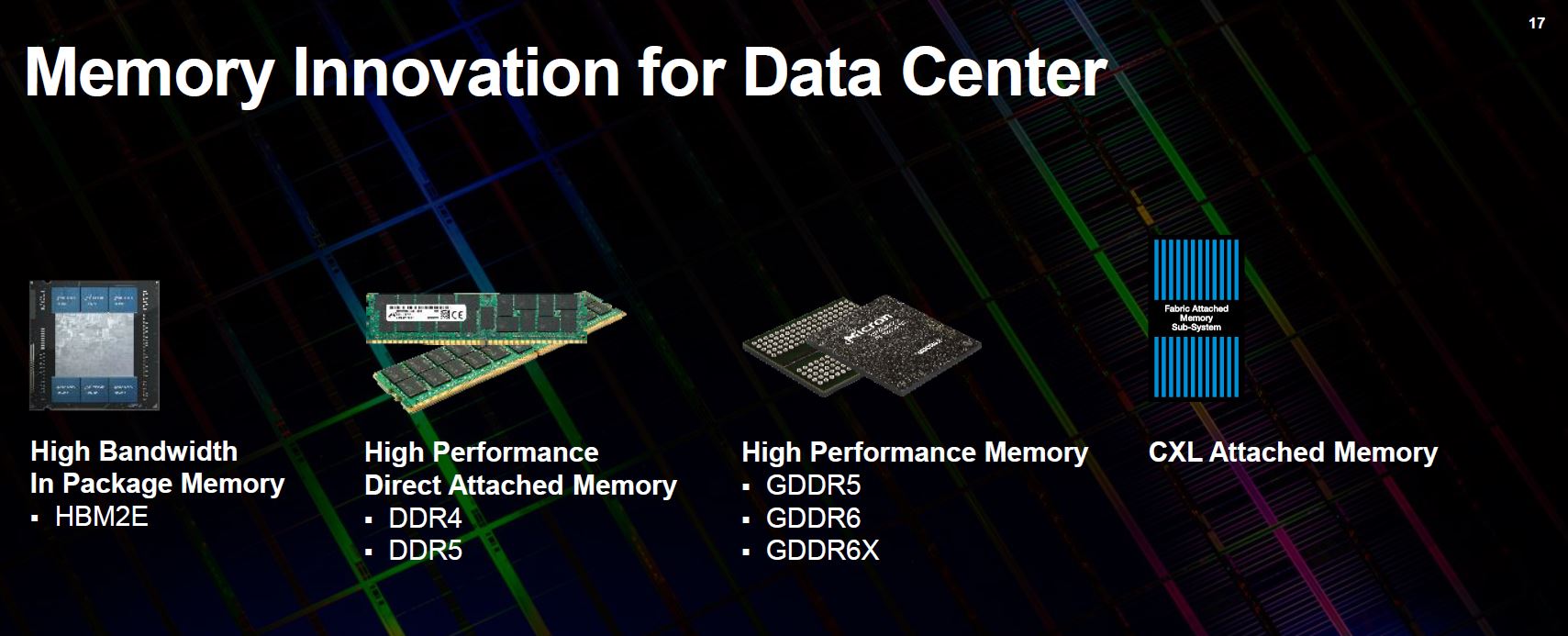
Now we still want to see more CXL attached memory from Micron.
Final Words
Overall, memory is going to be a big deal in the next generation of servers. To us, the PCIe Gen4 client SSDs are basically “table stakes” as the industry transitions. DDR5 and CXL attached memory may be as well, but the impact is going to be much greater. We recently did a piece Compute Express Link or CXL What it is and Examples where we went into why CXL will enable an enormous shift in computing. Of course, we have a video for this as well.





Re: “a lot of software work”
Man, was that ever an understatement.
My first gut-level reaction is that the opportunities for
complex bugs and genius hackers will be vastly increased
if the security for such a VAST SHARED MEMORY POOL
is not bullet-proof and I mean 100% rock solid.
Anything short of that level of security can easily
result in bugs that are so well hidden, they might
never be isolated successfully without an army
of CXL experts available over-time for weeks.
Am I being paranoid? Answer: YES!!!
p.s. We are ALREADY having enormous problems
with excess complexity e.g. C = (n^2 -n) / 2 .
This is the number of lines that connect “n” points
in a flat plane:
when n = 3 (a triangle), C = 3 lines
when n = 4 (a square), C = 6 lines
when n = 5 (pentagram), C = 10 lines
and so on. C increases exponentially
as n increases linearly.
ok